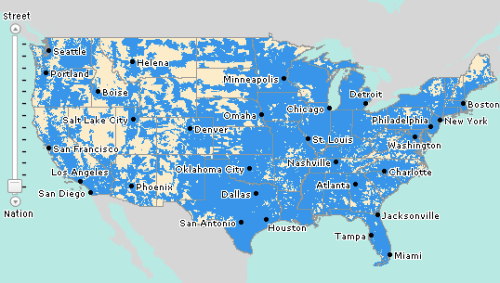iPhone power saving features may be the cause of network overloads rather then its high bandwidth consumption, according to an ArsTechnica report.
Normally devices that access data networks use an idling state that maintains an open data channel between the device and the network.
However, in order to get more battery life, Apple configured the iPhone's radio to simply drop a connection once it received its requested data. If more data is necessary the iPhone sets up a new connection.
While practice this does provide more efficient use of the battery it is causing an overload of the signaling channels used to setup connections.
Our source at O2 told us that network equipment that is configured to handle signaling traffic dynamically—shifting more spectrum to signaling channels when needed—can mitigate this problem. But even with more signaling capacity, network nodes may not be able to set up a data session, or may have problems getting a valid network address from an overloaded DHCP server. He said that data capacity is rarely the problem—nodes themselves can usually handle much more data than is flowing through them. However, the networks need to be configured to handle a growing number of devices connecting and disconnecting at a much higher rate than they've been accustomed to.
Ars was told by another source that European networks were not experiencing as much problems as AT&T since they heavily embraced text messaging and data far earlier then the US. SMS and MMS rely heavily on signaling channels and so the European networks have already configured their networks to dynamically manage signaling traffic.
O2 has reportedly shared what it learned about these issues with AT&T and other carriers.
Read More


Normally devices that access data networks use an idling state that maintains an open data channel between the device and the network.
However, in order to get more battery life, Apple configured the iPhone's radio to simply drop a connection once it received its requested data. If more data is necessary the iPhone sets up a new connection.
While practice this does provide more efficient use of the battery it is causing an overload of the signaling channels used to setup connections.
Our source at O2 told us that network equipment that is configured to handle signaling traffic dynamically—shifting more spectrum to signaling channels when needed—can mitigate this problem. But even with more signaling capacity, network nodes may not be able to set up a data session, or may have problems getting a valid network address from an overloaded DHCP server. He said that data capacity is rarely the problem—nodes themselves can usually handle much more data than is flowing through them. However, the networks need to be configured to handle a growing number of devices connecting and disconnecting at a much higher rate than they've been accustomed to.
Ars was told by another source that European networks were not experiencing as much problems as AT&T since they heavily embraced text messaging and data far earlier then the US. SMS and MMS rely heavily on signaling channels and so the European networks have already configured their networks to dynamically manage signaling traffic.
O2 has reportedly shared what it learned about these issues with AT&T and other carriers.
Read More



